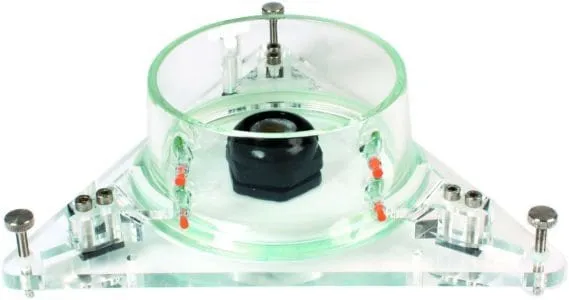Optimize Your Electrochemical Research with the Environmental TriCell™
The Environmental TriCell™ by BioLogic sets a new standard for flexibility and user convenience in electrochemical research. Designed to support a wide array of sample configurations, this innovative cell system serves as the backbone for conducting sophisticated electrochemistry experiments with ease. Compatible with Scanning Kelvin Probe (SKP), Localized Electrochemical Impedance Spectroscopy (LEIS), Scanning Vibrating Electrode Technique (SVET), and Scanning Droplet Cell (SDC) measurements, it integrates seamlessly with BioLogic’s M470 scanning electrochemical workstation.
Highlighting its user-friendly design, the TriCell™ allows for quick sample changes without the need to adjust the scanning head, significantly reducing the electrolyte volume needed for experiments. Its base plate levelers ensure optimal leveling of samples, facilitating consistent, high-quality results. The clear glass body not only provides a durable housing but also offers visual access for the VCAM3 long working distance video microscope, enhancing setup accuracy through precise probe and sample positioning.
Equipped with four inlet/outlet purge ports and an optional rubber gaiter cover seal, the Environmental TriCell™ is ideally suited for experiments requiring controlled atmospheres or fluid flow. Its versatile design makes it a key instrument for research in corrosion, coatings, and more, transforming experimental workflows with its unparalleled adaptability and efficiency.

